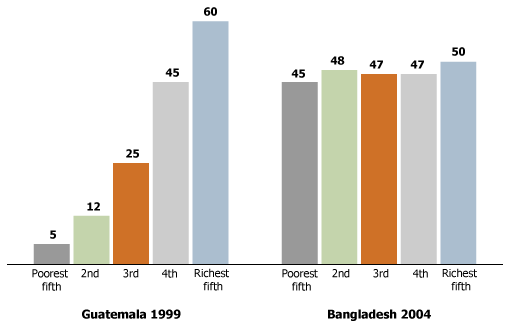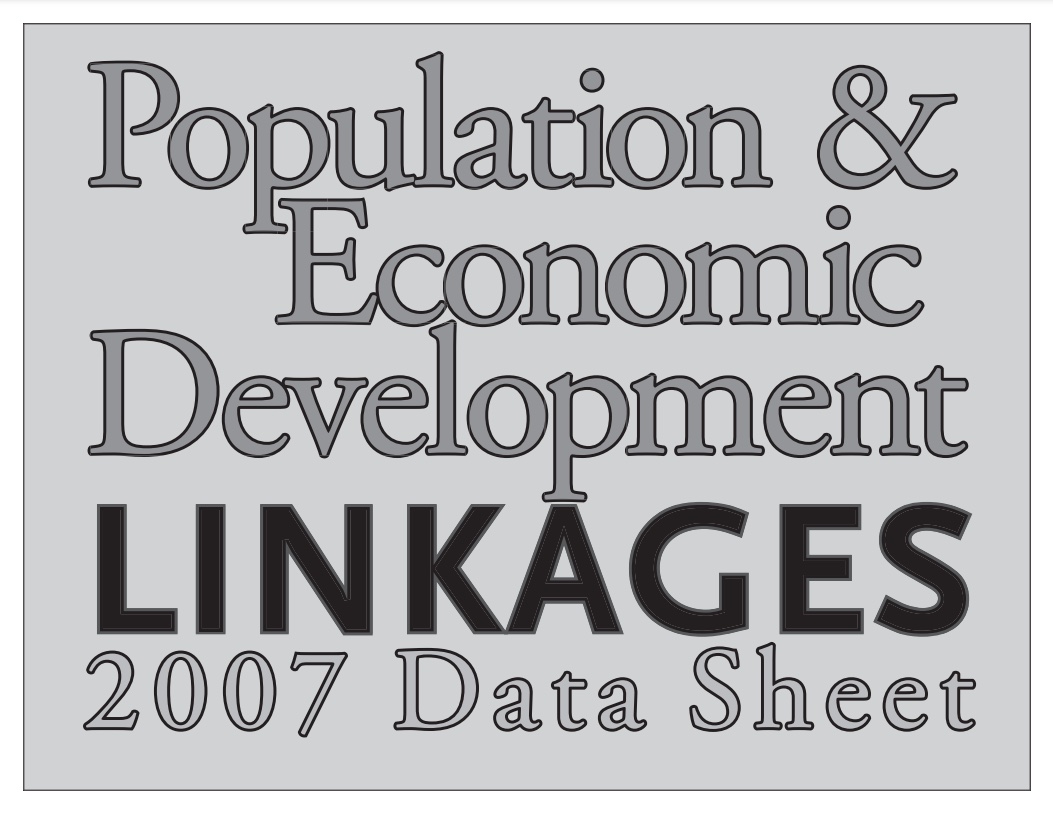
Population & Economic Development Linkages 2007 Data Sheet
Date
April 13, 2007
Author
- This data sheet also in French and Spanish.
(April 2007) Around the world, many resources have been poured into family planning and reproductive health programs that have improved the health of women and their families. But little is known about how these investments affect economic well-being—raising income levels and helping people out of poverty. While decades of research has produced no clear consensus on how demographic change affects economic development or vice versa, the two tend to be related.
The Population Reference Bureau’s Population & Economic Development Linkages 2007 Data Sheet explores some of these links.
“This data sheet takes a close look at health, poverty, and economic indicators both within and among countries,” says Erin Sines, co-author and PRB policy analyst. “This information should be of particular interest to policymakers and planners in guiding their countries’ future economic development.”
The data sheet provides up-to-date data on population, inequalities within developing countries, and economic opportunities. Data covered includes the percent of married women using modern contraception by wealth group (see figure), number of working-age adults per dependent child, and percent of females enrolled in secondary school. One side of the data sheet uses scatterplot graphs and bar charts to explore various associations.
Percent of Married Women Using Modern Contraception

Source: Population & Economic Development Linkages 2007 Data Sheet.
Some highlights:
- Association between fertility and education. The percent of girls enrolled in secondary school tends to be higher in countries with lower fertility rates.
- Association between fertility and poverty. Countries where a higher percentage of people live in poverty often have higher fertility rates.
- Unmet need for family planning by wealth group. The poorest people in a country often are associated with the highest unmet need for family planning services.
- Use of modern contraception by wealth group. Across the world, poor women use contraceptives at lower rates than wealthier women.
- Child mortality by wealth group. Children under age 5 face a higher risk of dying if they are in lower wealth groups than those in wealthier groups.

 ">
">